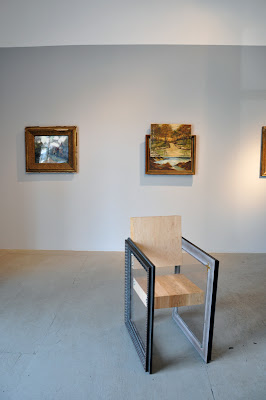Detail fromThe Birth of Venus by Cabanel, 1863
"Yes, my friend," the old man replied as he wakened
from his trance, "you must have faith, faith in art, and
you must live a long time with your work to produce
a creation like this. Some of these shadows cost me a lot
of hard work. Look there--on that cheek, under the eyes
--that faint shadow which you'd swear was untrans-
latable if you saw it in nature. Do you suppose an effect
like that didn't cost me incredible difficulties to re-
produce? But also, my dear Porbus, consider my work
closely, and you'll understand something more of what I
was telling you about the way I handle the modeling
and the outlines. Look at the light on the breast and you'll
see how, by a series of brushstrokes and by accents ap-
plied with a full brush, I've managed to capture the truth
of light and to combine it with the gleaming whiteness of
the highlights, and how, by an opposite effort, by smooth-
ing the ridges and the texture of the paint itself, by ca-
ressing my figure's contours and by submerging them in
half tones, I have eliminated the very notion of drawing,
of artificial means, and given my work the look and the
actual solidity of nature. Come closer, you'll see better
how it's done. At a distant, it vanishes. You see? Here,
right here, I believe it's truly remarkable."
And with the tip of his brush, he showed the two
painters a patch of bright color.
Porbus clapped the old man on the shoulder, turning
toward Poussin. "You know," he said, "We have here a
very great painter."
"Even more of a poet than a painter," Poussin replied
gravely.
"Here," continued Porbus, touching the canvas, "Right
here ends our art on earth."
---from The Unknown Masterpiece by Honore De Balzac.




















































